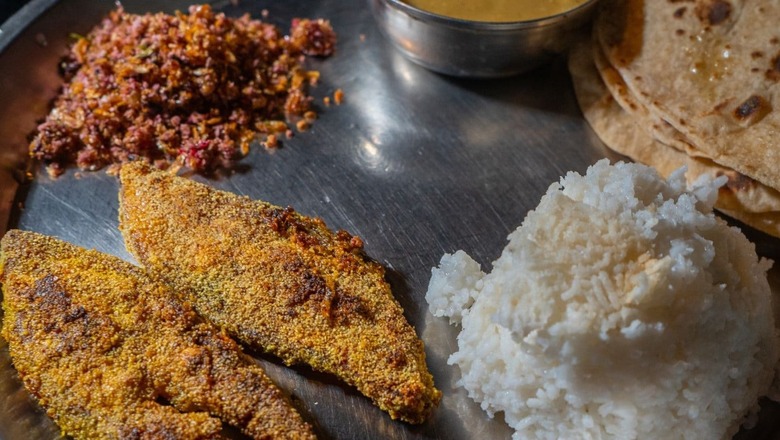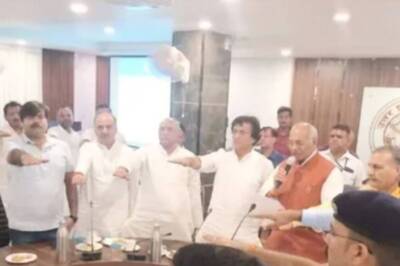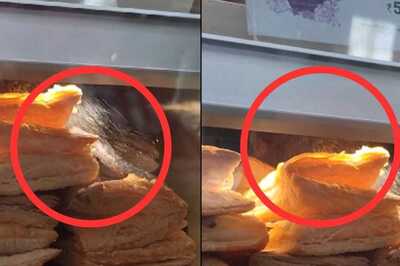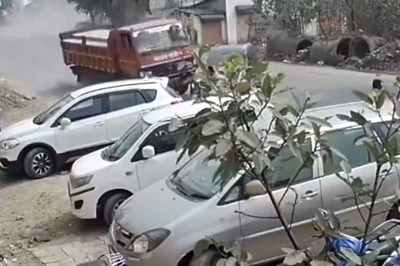
views
Who the rightful owners, authors, creators and title holders to Malwani, Gomantak or Konkani cuisine are, is a question that has been battled in gastronomic and anthropological circles for a very long time. This cuisine is often mistaken for the near to taste Manglorean cuisine, a close but distinctly different food family. Do Goan Hindu food, Goud Saraswat Brahmin (GSB) cooking, Karwari food include themselves in this set or sub-set? I would suggest that GSB cooking and Goan Hindu Cooking are like two brothers of the same kin. And like two brothers, the argument about ownership should stop there, as will I stop this analogy before I lose control of it.
Malwan is just a small little village on the Konkan Coast. Yet the people from that region formed a large part of the labour class that migrated to Mumbai, and hence made their cuisine popular, so much so that any coconut-based Maharashtrian food from the coast generically got labelled as Malwani food.
The Konkan Coast (part of which Malvan is) though stretches from Mumbai all the way down to Mangalore through Goa. With influences from Maharashtra, Goa and Karnataka, the Karwar style of Konkan food, with its liberal use of fresh coconut, is influenced by Kerala and Karnataka food, while the Malvani style is closer to Goan or Maharashtrian style. This coconut lined seaboard throws up coconut and fish as its most obvious offering. This region is also known to offer some of the best seafood. The heavy monsoon makes rice cultivation a livelihood. Rice which is either eaten in various forms either as is (plain boiled or in pulao), puffed (for snacks and desserts), or ground into flour (for polas, and wade).
The region also grows a great quantity of kokum, a violently purple coloured, sweet-sour fruit whose desiccated skin is used for adding a gentle tanginess to Konkani curries and above all used to make the cooling digestive mixture ‘sol kadi’. The use of kokum, tamarind and raw mango is what differentiates Malwani food from the Karwar style of cooking.
The Konkanis housewives are a proud and fastidious lot when it comes to their food and spices, and can spend hours in discussing which red chilly adds what flavour to which curry.
The earliest in Mumbai to serve Konkani food was Anant Ashram in Girgaum. Opened over 90 years ago, it unfortunately shut down in 2009. A number of unemployed people came from the Konkan looking for work in the nearby mills. Essentially a Karwari eatery was for those working men who had left their wives behind in the village to find a fortune in the city and missed home food. Mill workers, labourers, white collared workers, Anant Ashram and other such eateries, fed those migrants at just four annas a head. Girgaum had around 25 khanawals, including those that served traditional vegetarian Brahmin-style meals.
While Dadar has a sprinkling of really good smaller joints like Sachin, and Sindhudurg, the suburban Gazalee in Vile Parle made the greatest impression a few years ago. Townies drove in droves all the way past the Western Express Highway to sample crabs and Bombay Duck. The food is as usual fish heavy. Their famous bombil fry and crabs are a must try. Slightly more expensive, but the food is to die for. Whether it is the crab tandoori, the stuffed bombil or the prawn masala, they are all exquisite. What hits the button is the Teesri Kothimbir masala.
At Flora Fountain, the old business area, in the heart of Janmabhoomi Marg, Fort, is Pratap Lunch Home was founded in 1961. Pratap Lunch Home is the first original Mangalorean Seafood Restaurant of Mumbai that is still standing tall. King Prawn Gassi, Crab Curry, Fish Tawa Fry, Pomfret Butter Pepper and Prawns Chilly Roast, Chicken Kori Roti and a menu full of Manglorean favourites.
That part of the city used to have several small ‘bhojnalays’ or eateries serving Konkani food, like Pradeep Gomantak Bhojanalya on Gunbow Street, which still serves you a simple, Hindu Goan food, which is cost-effective and delicious.
Pradeep Gomantak is over 70 years old. It opened in the days when the Fort area was the main business centre of Mumbai. Pradeep catered to the hungry office goer during lunch time offering them value for money, home style meals. After all these years, the restaurant still does what it started off to do. The bombil fry, the seafood thalis, fried fish and mutton and chicken masala and vade taste home-made and wholesome.
Sandeep Gomantak Bhojanlay is up on the second floor of a really old building on Bazaar Gate Street in Fort. It is so non-descript and simple that only the regular customers know about it. When you sit down at one of those simple tables to eat, it is business-like and quick. The seafood is simple, just fried or curries, with rice or chapati. The chicken curry is spicy, and mutton is often not available. I just love it.
But there has suddenly been a revival in this cuisine. Konkani, Malwani, Karwari and Saraswat Maharashtrians have opened up their own kitchens, their mother’s and wife’s cooking, and there is a new resurgence. Masoli at Byculla, makes some great crab, fried fish, shell fish, cooked in green masala, red masala with rice, bhakri, wade and chapatis. Raju Malwani, is my favourite little secret roadside cart. An evening city secret, Raju’s cart is teeming with the aromas of freshly fried catch such as bombil, surmai, prawns and more.
Wholly depending on the day’s catch, there isn’t just seafood though, as there’s mutton and chicken saguti, mutton and chicken sukha, chicken liver masala, kheema, egg curry and as well, all cooked home-style the Konkani way.
All you need is a strong desire and a strong stomach. Leave the rest to the food.
Kunal Vijayakar is a food writer based in Mumbai. He tweets @kunalvijayakar and can be followed on Instagram @kunalvijayakar. His YouTube channel is called Khaane Mein Kya Hai. The views expressed in this article are those of the author and do not represent the stand of this publication.
Read all the Latest Lifestyle News here


















Comments
0 comment